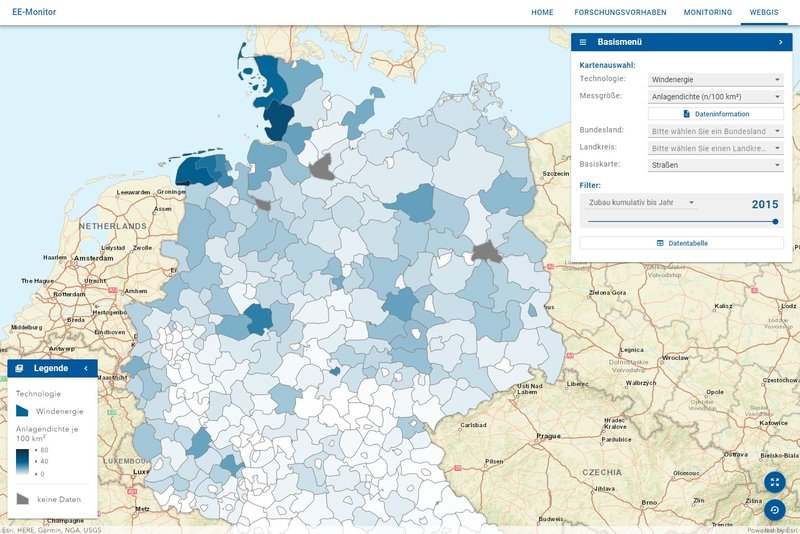Since the Electricity Feed Act came into force in 1991 and the Renewable Energy Sources Act in 2000, renewable energies have been developing rapidly. While in 1990 only about 19 terawatt hours (TWh) of electricity were generated from renewable energies, in 2018 the figure was already about 225 TWh. Renewable energies thus take second place in the German electricity mix after lignite and hard coal. Their share of gross electricity consumption was already around 38 percent in 2018.
The need for a transformation of the energy system and the positive effects of renewable energies for the reduction of greenhouse gas emissions are undisputed. Climate protection is an important prerequisite for the preservation of nature and landscape and helps to ensure the long-term survival of species. For a long time, renewable energies were considered environmentally friendly per se, but with increasing expansion, impacts on nature and the environment are becoming more apparent, which can lead to conflicts with nature conservation goals. These include, for example, bird and bat strikes at wind turbines, loss of fallow land and biodiversity due to monocultures of energy crops, or landscape impairments due to high-voltage power lines.
In contrast to the large and spatially concentrated fossil power plants, a large number of renewable energy plants are decentralised in space. Their expansion is accompanied by a significantly higher land requirement as well as a more widespread and far-reaching spatial impact. Recording the spatial location and spatial relationships of renewable energy plants is therefore an important building block for understanding their effects on nature and landscape. Therefore, as part of the RES Monitor research project, scientists compiled a detailed data set comprising 24,475 wind turbines (approx. 39.3 gigawatts (GW) installed capacity), 3,265 ground-mounted photovoltaic plants (approx. 9.4 GW), 14,236 bioenergy plants (approx. 6.8 GW) and 7,153 hydropower plants (approx. 4.1 GW). This was already made publicly available at the beginning of 2019 via the UFZ data research portal.
This data basis enables new analysis options of high regional but also national significance, for example on the following questions: Which land areas - forest, arable land, meadow - are particularly taken up by renewable energies? Are wind turbines moving ever closer to nature reserves or settlements?
The WebGIS application gives interested users direct and free access to this scientifically prepared database. In this way, anyone can easily find out about the expansion of renewable energies for power generation in a specific region or federal state. Planners and representatives of politics, business and society are also invited to make intensive use of this new analysis option.
The Federal Agency for Nature Conservation (BfN) funded the research project "Nature Conservation Monitoring of the Expansion of Renewable Energies in the Electricity Sector and Development of Instruments to Reduce the Impact on Nature and Landscape (RES Monitor)" between August 2015 and December 2018 with funds from the Federal Ministry for the Environment, Nature Conservation and Nuclear Safety (BMU). The aim was to record and present as systematically as possible the developments and resulting impacts of renewable energies for electricity generation (wind energy, photovoltaics, bioenergy and hydropower) and the electricity grid required for energy transport on the biotic environment or the concerns of nature conservation, particularly in the sense of the Federal Nature Conservation Act. In addition to the UFZ, the German Biomass Research Centre, the Leipzig Institute for Energy, Bosch & Partner GmbH and Ingenieurbüro Floecksmühle GmbH participated in the research project. The final report on the research project is expected to be published in autumn 2019.
Access the WebGIS application and information on the EE Monitor research project:
www.ufz.de/ee-monitor (in German)
Access to the original dataset (in English): "Geocoded asset master data of on-shore wind power-, photovoltaic field systems, bioenergy- and river hydro power plants in Germany until 2015"
Scientific publication on the original dataset (In English): "Spatial Distribution of Wind Turbines, Photovoltaic Field Systems, Bioenergy, and River Hydro Power Plants in Germany"
Source: Press Release (in German) of the Helmholtz Centre for Environmental Research (UFZ) from 17.06.2019

